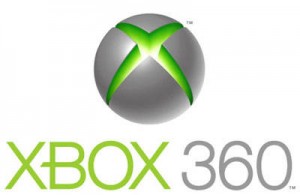Please Login: The Revolution Will Begin Shortly
Disruptive companies come in all shapes and sizes. Many are startups with an entirely new take on how to do something. However, established companies can also be highly positive forces for disruption when they leapfrog into new industries and shake things up. We saw this earlier in the week at E3 when Microsoft announced an increase in the amount of video offerings available to Xbox LIVE subscribers. This is a great example of a larger company disrupting the market for home entertainment.
As a result, Xbox might be one step closer to becoming a one-stop shop for in home entertainment awesomeness. Only the networks and cable companies stand between Microsoft and consumers fully harnessing the power of the Xbox.

Web-based TV and the cord-cutting revolution have all the characteristics of “disruptive innovation.” Disruptive innovation comes in at the low-end of the market, usually satisfying a niche group of customers, and gradually works its way up to challenge the mainstream enterprises, in this case cable and satellite companies. Microsoft’s offering shows that web-based TV is climbing the value chain towards that all-important “northeast quadrant.” Also synonymous with disruptive innovation, the new product or service offers functionality beyond the capabilities of the traditional products. In Xbox’s case, typical video entertainment options (limited TV programming, sports, and movies) combine with features not available in the traditional market (high-end gaming, downloadable music, smart device and Internet integration).
The announcement that Xbox is boosting its TV-service included the news that the platform would drastically increase its sports offerings, including live sports. This detail came with a big catch, however: the crown jewel of the sports offerings, the ESPN family of networks, will only be available to Xbox LIVE users who have an existing cable subscription. This is called “authentication.” That’s right folks, you can have that newfangled horseless carriage, after you authenticate that you do indeed still own a horse.
ESPN is not alone in trying to tiptoe into the new frontier. MLB.tv, perhaps the best example of a sports league embracing Internet distribution, still blacks out games that are available on television in the users’ metropolitan area due to the exclusivity clauses local cable companies demand. Hulu, the biggest source of network TV content on the web, is also rumored to be transitioning to this model. Consumers get it, and they have organized on twitter to try to get HBO to switch away from the “authentication” model and offer its “Go” programming for sale for Internet-only consumers. Major networks, on the other hand, are trying to “embrace” the power of the Internet, but in a way that will not hinder their legacy cash cows. Hell, they said it: nothing to see here folks, the customer remains screwed.
This authentication strategy, when combined with data caps on bandwidth usage is part of a highly-orchestrated maneuver to resist the imminent disruption. Content and cable are colluding to make sure that the only way that you get high-quality, continuous video content is through their walled-garden – or at the very least you still have to pay for their walled garden. Artificially limiting the natural capabilities of a device to protect traditional revenue streams certainly isn’t unique to this space, and history hints that this can’t last for too long.
Sports provide a particularly important tool in defending the walls of the garden, because they have long been the key to customers’ hearts and pocketbooks. Many high-profile spats between content providers and distribution outlets are sports-related. If you are a proud citizen of Red Sox Nation or wear plastic cheese on your head, you are not dropping cable – no matter how much you want to – if you can’t see your team play. The NBA, NHL and MLB know this and they use this leverage to make the distribution channels pay top dollar for access to their content. Recently, they have even used their content as a driver for launching their own local cable sports networks, like SNY and YES in New York. Ironically, the result of this is that the same phenomenon that is preventing people from cutting the cord is actually what is fueling the first great cord-cutting migration among non-sports fans, as the rising sports costs are jacking up basic cable bills.
At some point in the future, the sports leagues will realize that there is more value selling their product directly to consumers via the Internet without local blackouts and cable subscription requirements. This is where the Xbox comes in. As the bestselling video game system in the world, the Xbox 360 is already in nearly 70 million living rooms. That’s almost three times as many subscribers as Comcast. This is important because the alternative will already be in consumers’ living rooms when they get the inclination to cut the cord. In fact, it may be what gives them the idea to cut the cord in the first place.
A key principle of disruptive technology is that the original supply does not equal the market demand. Disruptive companies take the Field of Dreams approach to innovation: build it and they will come. They anticipate and shape future demands. Even though video and Internet integration are secondary features on the Xbox behind video games, customers’ preferences will evolve. As an increasing number of families rent movies, play their own multimedia and watch TV channels through their Xbox, while also playing video games and browsing the Internet, more and more will begin to see the device differently. As consumer demands evolve, the demand for video options on Xbox will increase and content providers and sports leagues will eventually be forced to give Xbox users the same programming options that they give to cable companies. Don’t be surprised if, in the next decade, you see Microsoft compete for the rights to live sports programming of its own.
At the moment, the only thing holding Xbox back from being a true cord-cutting replacement to cable is not technology or ambition on Microsoft’s part, but the cable companies’ and networks’ attempt to hold on to their legacy business models for as long as possible.








